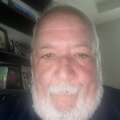Technology Update: “Will Extracellular Matrix Help Patients Grow Their Own Heart Valves?” By Dr. Marc Gerdisch
By Adam Pick on February 15, 2011
Advances in medical technology for valvular treatment continue to evolve rapidly. Recently, I learned more about the use of Extracelluar Matrix (ECM) for heart valve repair and remodeling from Dr. Marc Gerdisch, the chief of cardiothoracic surgery at St. Francis Heart Center in Indianapolis, Indiana. In 2008, Doctor Gerdisch was the world’s first surgeon to use ECM to repair a damaged heart valve.
Here is my interview with Dr. Gerdisch. This discussion was in direct response to Scott’s question, “Will patients be able to grow their own heart valves in the future?”
To help you learn more about Extracellular Matrix and Dr. Gerdisch, I have provided an additional video about ECM and a transcript of this interview below.
Adam: Hey, everybody. This is Adam and again we’re here at STS in San Diego for the 47th annual event. I’m thrilled to be with Dr. Marc Gerdisch from St. Francis Heart Center in Indianapolis. As you know, we’re answering your heart valve repair and heart valve replacement questions that you put up on HeartValveBlog.com. We have a great question from Scott and it’s all about technology and how technology’s impacting heart valves and heart valve surgery. Scott writes, “I’ve heard about a new technology in which doctors can grow their own heart valves. What is the latest on this research?”
Dr. Gerdisch: Absolutely. This is really, really exciting stuff right now because we actually are on that path. I guess there’s different ways to look at it as far as how far we are on it. We think we’ve actually made a fair amount of progress and, in fact, in humans we have done some work where we’ve reconstructed portions of heart valves and portions of adjacent heart tissue using what’s called Extracelluar Matrix. This is basically tissue without the cells, completely decellularized, but with the framework in which cells live and that replacement is actually dynamic. In other words, it’s not something you put in that’s a static patch that stays the same forever. What happens is your cells are integrated into it. It becomes repopulated with cells, with new cells, and as a function of those cells being there, being present in the matrix, the cells actually do their job and will replace the matrix over time. So what you have implanted that eventually is replaced by the activity of your own cell. As you know, any cell in your body can be any cell in your body so the same cell in your eyeball can be the cell in your big toe. They all have the same genetic information. So we have this. It becomes repopulated. It’s your tissue and it’s not a foreign body so the impact of that is, over time, our expectation is that this is going to outlast previous devices and it will provide patients something that they won’t identify as foreign and won’t induce inflammation. So that’s what we’ve done so far. Now on a more — as far as a trajectory toward building an entire valve, we have started to do some work in animals and it’s been very, very promising and it — so much so that I feel like we’ve got the platform now that’s going to launch us on to that technology. It’s not something that’s going to happen overnight. These are huge steps. We’re taking small steps toward it but we’ve made some real solid progress with it. Some of the things I can’t actually describe to you, I can’t tell you about, because they’re unique and they’re not ready for prime time, but I can tell you that we have made a fair amount of progress because we’ve got that platform down and we’re working hard to get to the point where we can go about it.
Adam: Got it. So, I have a followup question and I have a statement. We’ll start with the question. Not to put you on the spot, but do you have any kind of estimate in where there might be something tangible in which the technology actually can regenerate a valve, a part of valve? Is it possible or is that just not — not yet?
Dr. Gerdisch: No. Definitely a part of valve. We’ve done that. I’ve got roughly 60 patients that I’ve reconstructed some portion of the interior of the heart. Many times it’s the valve. Many times it’s part of the valve. Lately, other surgeons have been doing that. Surgeons who are very well know for reconstructive techniques in valve surgery are now adopting that with Extracelluar Matrix, so the use of the matrix means that the patient’s own cells are going to populate that portion of the tissue and they’re not going to have that foreign body. So we’ve done that. Parts of valves have been repaired using this technology. The next step is to build a valve and, like I said, we’re kind of in the early phases of it. Things are moving very quickly. Now that doesn’t mean that next year there’s going to be some — or even in two years, but compared to other technology of this nature, we’re making progress a lot faster than we expected and I don’t think it’s unreasonable to expect that in my career, anyway, we’re going to be able to replace a valve with a clone, a valve that grows, a valve that develops.
Adam: Amazing.
To learn more, please see Dr. Marc Gerdisch’s surgeon profile or call (877) 78-VALVE (82583).
Keep on tickin!
Adam












